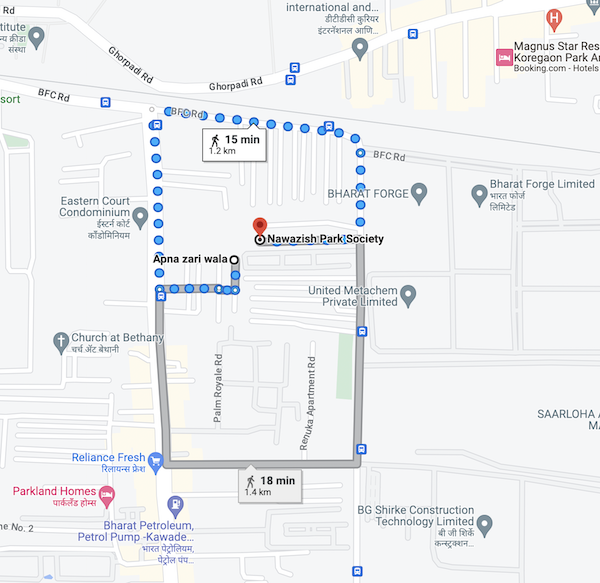Last month, I visited India for the first time since moving to San Francisco from the suburbs. Here are some hot takes about walkablity and urbanism
- Indian cities feel more walkable than American suburbs, but less walkable than American cities
- The ‘more walkable than US suburbs’ largely comes from zoning — all places I’ve lived in India are mixed use by default, and as a result there’s generally a paan shop, a tea stall, and often a grocery store that you can walk to. In a US suburb, in contrast, the closest non-residence to you would typically be several miles away. Walking is not really a viable way to get anywhere
- The ‘less walkable than US cities’ is a result of poor (or maybe lack of?) urban planning. Streets in India are laid out haphazardly rather than in a grid, making distances longer than they need to be. Here’s an example comparing walking a similar distance near my in-laws’ neighbourhood in Pune, and my neighbourhood in San Francisco:


Notice how the dead-ends at the end of each block force you to take a circuitous 15 minutes walk to get to a spot less than 100 meters away
- The other reason for ‘less walkable than US cities’ is because the
urban environment is quite hostile to pedestrians
- Sidewalks are nonexistent, or unusable thanks to shops and parked vehicles
- Drivers don’t respect pedestrian right of way
- Honking is way more common than in the US
- Walking is thus loud, unpleasant and stressful